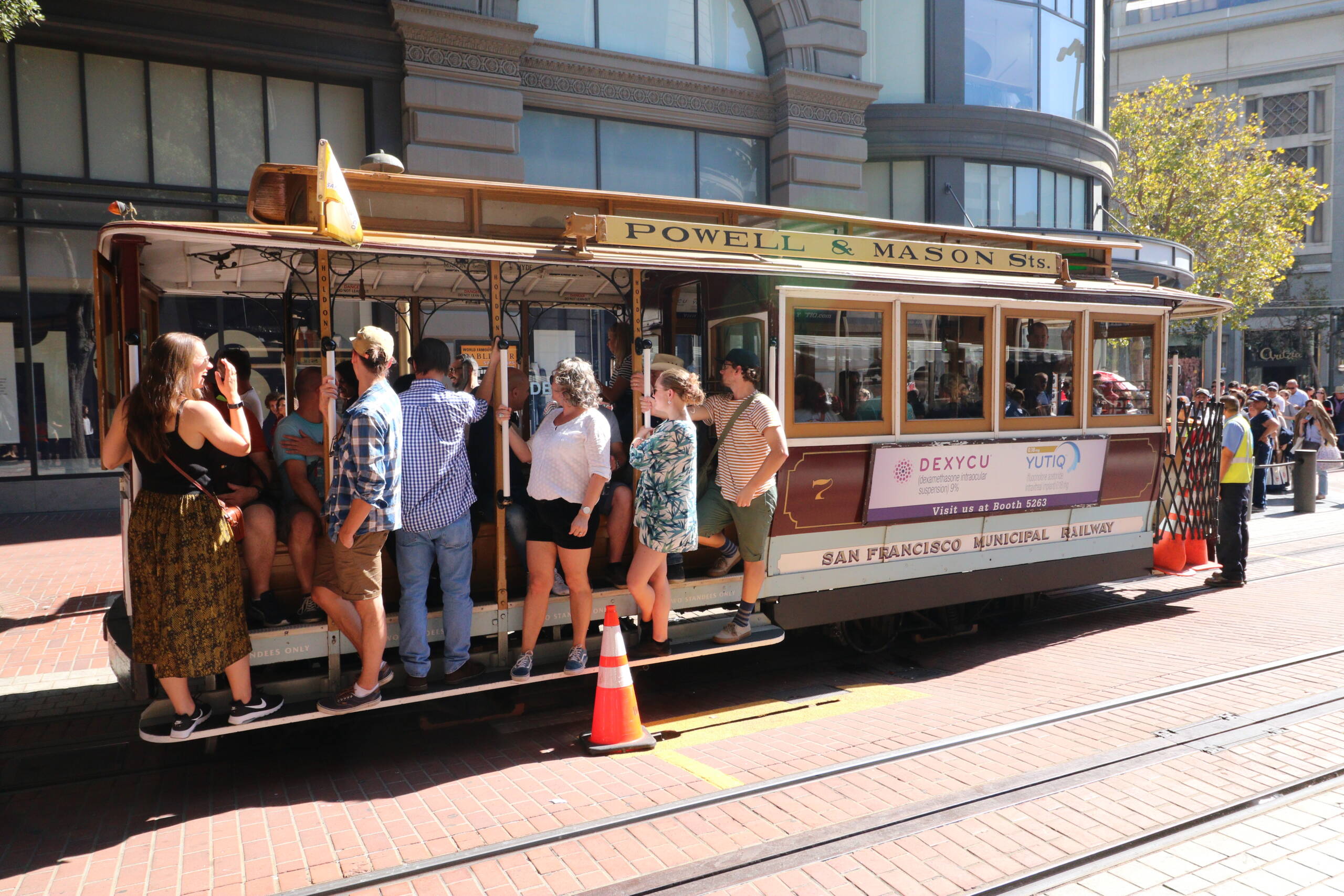The scene is instantly recognizable: San Francisco’s Powell & Mason cable car, creaking its way up the city’s hills, jam-packed with tourists clinging to its wooden frame. In the image, visitors squeeze onto the narrow steps, gripping poles with one hand and their phones with the other, while others lean out into the sun as if the very act of dangling from the side is part of the experience they came here for. The burgundy and cream paint glows against the glass façades behind it, and the long queue of waiting passengers hints at the time already lost just to secure this fleeting ride. It’s a charming tableau, yes—but also a telling one.

For decades, the United States has sold itself as a dream holiday destination, the land of road trips, neon skylines, wide-open landscapes, and cinematic backdrops. But for many holidaymakers, that dream has become clouded by frustrations that begin long before they even step foot on American soil. The unpredictable border rules have become a notorious headache—visa requirements shift without warning, processing times balloon, and customs officers wield arbitrary authority with a heavy hand. Tourists hear stories of people being turned away despite valid paperwork, and the simple act of passing through U.S. immigration feels more like navigating an interrogation than beginning a holiday. Compared to Europe’s seamless Schengen entry or Asia’s efficient digital visas, America has become the place where one might spend hours explaining themselves at a border checkpoint before being allowed to ride the very cable car pictured here.
The politics of the last decade have only sharpened the perception that visitors are not entirely welcome. Under Trump, the language of “America First” sounded uncomfortably like “everyone else last.” Canada and Mexico—once steady streams of cross-border tourism—found themselves insulted from the podium, souring the casual, good-neighbor trips that once felt natural. For Europeans and Asians, hearing allies derided and policies whiplash between bans and rollbacks created a lingering sense of instability. A holiday is supposed to be carefree; America now too often feels like a gamble.
This San Francisco cable car, overloaded with tourists, is almost a metaphor for America’s current tourism reality: too crowded, too stressed, too performative. Visitors pile in because it is “the thing to do,” only to realize that the ride lasts just a few minutes, that they have been standing in line longer than they have been on board, and that half the experience is filtered through their phone cameras. The joy of discovery is replaced by a box-checking exercise, an Instagram moment no more authentic than any staged attraction elsewhere.
Meanwhile, rival destinations are quietly winning the battle. Lisbon offers sunny ease and walkable charm. Tokyo dazzles with efficiency and safety. Dubai lures travelers with luxury and futuristic order. Compared to these, America presents itself as a place of queues, unpredictable rules, and political headwinds. Tourists do not cross oceans for stress; they cross them for wonder. And when the wonder is overshadowed by bureaucracy and banality, the magic fades.
America still has the landscapes, the culture, the icons—the Golden Gate Bridge remains magnificent, Broadway still dazzles, and the Grand Canyon still humbles. But the image of tourists clinging precariously to the side of a cable car in San Francisco says something deeper: the country’s reputation as a holiday destination is itself hanging on by a pole. For many travelers, the question is simple—why endure the hassle when the world offers smoother, warmer welcomes elsewhere?
Leave a Reply